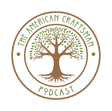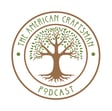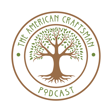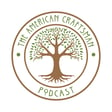
Heading to IWF
The week before IWF and discussing everything going on inside and outside the shop.
Don't forget to subscribe to our new YouTube channel Today's Craftsmen https://www.youtube.com/@TodaysCraftsmen
Merch:
The American Craftsman Podcast: https://amzn.to/482ttka
Greene Street Joinery: https://amzn.to/3Zfk5ph
Today's Craftsmen: https://amzn.to/3R5DRl8
Check Out Our Sponsors!
Visit Häfele at www.hafele.com
Visit Ridge Carbide at www.ridgecarbidetool.com
Support us on Patreon!
https://www.patreon.com/Greene_st_joinery
Greene Street Joinery is a custom design & build shop located in Monmouth County, New Jersey. We build multigenerational furniture with an eco-friendly and sustainable mindset.
Inspired and guided by the ideals of the Arts and Crafts movement, we believe in the use of traditional craftsmanship and simple, well-proportioned forms; sustainability and ethical practices; and importantly, taking pleasure in our work as craftsmen to create quality pieces of enduring value.
Follow us!
Instagram: https://www.instagram.com/greene_st_joinery
Facebook: https://www.facebook.com/greenestreetjoinery
Support this podcast at — https://redcircle.com/the-american-craftsman-podcast/donations
Advertising Inquiries: https://redcircle.com/brands



